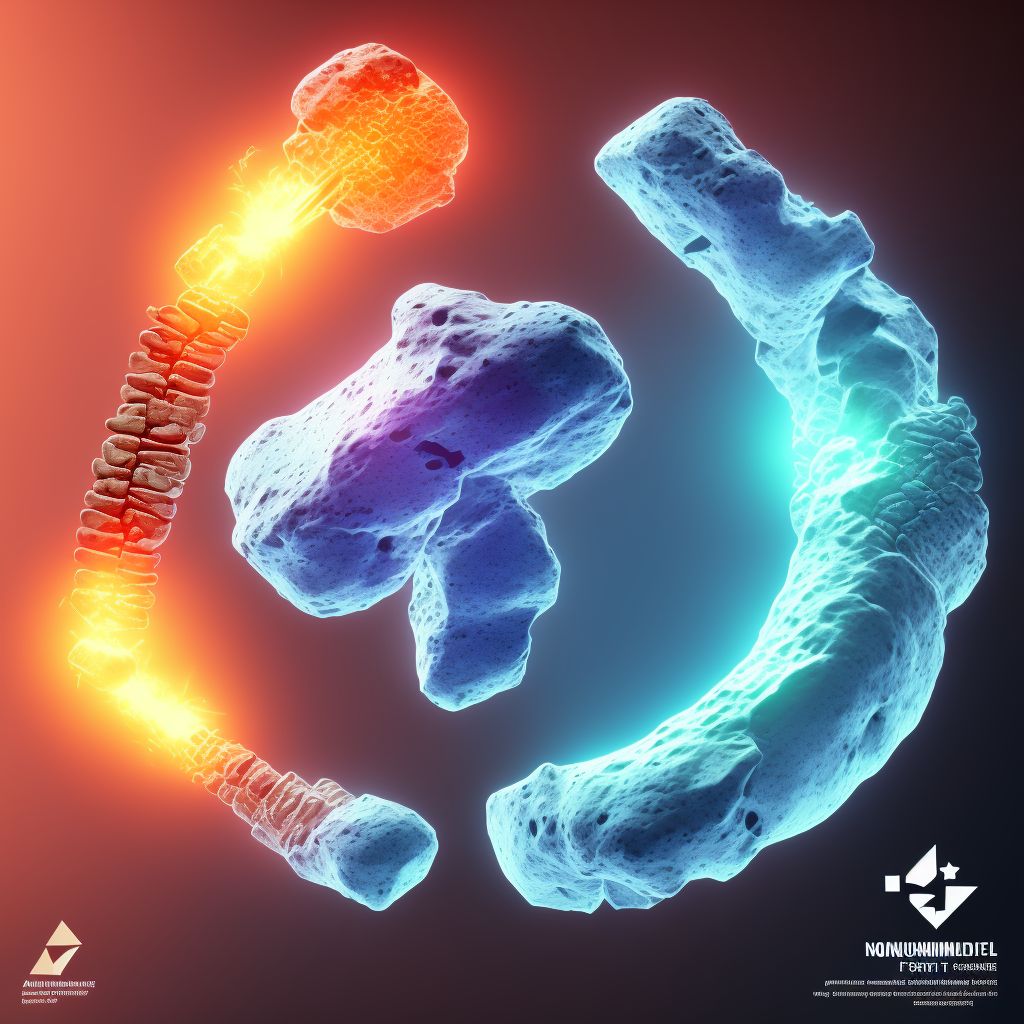
Nondisplaced comminuted fracture of shaft of unspecified tibia, subsequent encounter for open fracture type I or II with nonunion Save
ICD-10 code: S82.256M
Disease category: S82.256: Nondisplaced comminuted fracture of shaft of unspecified tibia
Nondisplaced Comminuted Fracture of Shaft of Unspecified Tibia: Understanding Open Fracture Type I or II with Nonunion
A nondisplaced comminuted fracture of the shaft of the tibia refers to a type of fracture in which the bone is broken into multiple fragments, but the pieces remain aligned and in their original position. This particular fracture occurs in the shaft of the tibia, a long bone located in the lower leg. In some cases, this fracture can lead to complications such as nonunion, where the broken bone fails to heal properly.
When an open fracture occurs, it means that the fractured bone has pierced through the skin, exposing it to the external environment. Open fractures are classified into different types based on the severity of the soft tissue damage. Type I or II open fractures are considered less severe, with minimal soft tissue injury.
In subsequent encounters for open fracture type I or II with nonunion, medical professionals focus on monitoring and managing the nonhealing of the bone. This may involve regular examinations, X-rays, and assessments to determine the progress of the healing process. Nonunion can occur due to various reasons such as poor blood supply, infection, or inadequate immobilization.
- Regular examinations: Healthcare providers will schedule follow-up appointments to evaluate the nonunion and assess any changes in the condition of the fracture.
- X-rays: X-ray imaging is crucial in monitoring the progress of bone healing. It helps identify any signs of bone union or detect potential complications.
- Assessment: Medical professionals will closely examine the fracture site to check for signs of infection, inflammation, or other complications that may hinder the healing process.
It is important to note that the purpose of this article is to provide information and raise awareness about the condition. It is not intended to provide medical advice or treatment recommendations. If you or someone you know is experiencing a nondisplaced comminuted fracture of the tibia with nonunion, it is essential to consult with a healthcare professional for proper evaluation and guidance.
Treatment of Nondisplaced comminuted fracture of shaft of unspecified tibia, subsequent encounter for open fracture type I or II with nonunion:
Treatment Options for Nondisplaced Comminuted Fracture of Shaft of Unspecified Tibia, Subsequent Encounter for Open Fracture Type I or II with Nonunion
A nondisplaced comminuted fracture of the shaft of the tibia can be a complex and challenging injury. When combined with an open fracture type I or II and nonunion, it requires careful consideration and appropriate treatment. In thi...
To see full information about treatment please Sign up or Log in